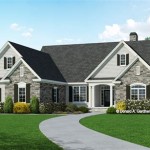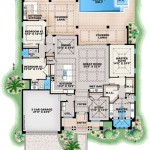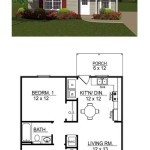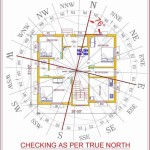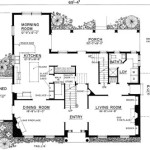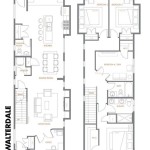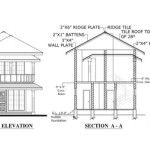Bird House Plans for Cardinals: A Comprehensive Guide
Attracting cardinals to a garden or backyard requires understanding their specific needs and preferences regarding nesting sites. Unlike cavity-nesting birds that readily use standard birdhouses, cardinals are open-nesting birds. This distinction is crucial when considering birdhouse plans suitable for cardinals. Providing the appropriate structure and placement can significantly increase the likelihood of cardinals nesting and raising their young successfully within proximity.
This article explores the characteristics of ideal cardinal nesting structures, including open-fronted houses, suitable materials, dimensions, placement recommendations, and essential maintenance practices. These considerations are vital for creating a safe and attractive nesting environment for these vibrant songbirds.
Understanding Cardinal Nesting Preferences
Cardinals favor dense shrubs, vines, and thickets for nesting. These locations provide adequate cover from predators and the elements. When adapting to a birdhouse, cardinals still seek a sense of security and concealment. Therefore, a completely enclosed birdhouse with a small entrance hole is not suitable. Instead, an open-fronted structure that mimics the natural nesting environment is recommended. The open front allows the cardinals to survey the surroundings and quickly escape if necessary. The size and shape also play a significant role in the acceptability of the nesting structure to cardinals. Too small, and they won't have enough space to build and raise their brood; too large, and they may feel exposed and vulnerable.
Furthermore, materials used in construction and the overall design must be conducive to drainage and ventilation. A poorly constructed birdhouse can become a breeding ground for bacteria and parasites, which can be detrimental to the health of the nesting birds. The textures and colors of the materials are also important. Cardinals tend to prefer natural materials that blend in well with the surrounding vegetation, offering camouflage and reducing the visibility of the nest to potential predators.
Placement, too, is a major determinant of success. Cardinals prefer nesting sites that are relatively high off the ground, usually between three and ten feet, in areas with dense foliage that provides additional concealment. They also appreciate locations that are sheltered from prevailing winds and direct sunlight. Mounting the open-fronted house on a sturdy branch or attaching it to a fence post within a shrubby area can be an effective strategy.
Essential Elements of Cardinal Birdhouse Plans
Constructing a suitable birdhouse for cardinals necessitates careful attention to several key elements. These elements collectively contribute to the structure's functionality, durability, and attractiveness to cardinals.
First, the dimensions of the birdhouse are critical. A floor size of approximately six to eight inches square provides a suitable nesting platform. The height of the back wall should be around eight to ten inches, while the front should be open, or have a significantly lower height, to allow easy access and visibility. The sides should taper slightly downwards towards the front to facilitate water drainage.
The choice of materials is also important. Untreated cedar or redwood are excellent options due to their natural resistance to rot and insects. These woods are also lightweight and easy to work with. Avoid using pressure-treated lumber, as the chemicals used in the treatment process can be harmful to birds. Plywood can be used for the base, but it should be exterior-grade to withstand the elements. Recycled materials, such as reclaimed wood, can also be used, provided they are free from paints, stains, or preservatives that could be toxic to the birds.
Ventilation and drainage are of paramount importance. Drill several small holes in the floor of the birdhouse to allow water to drain. Create ventilation holes near the top of the sides to promote airflow and prevent the interior from becoming too hot or humid. Overhanging roofs help to protect the nest from rain and direct sunlight. The roof should be slightly sloped to facilitate water runoff. A good rule of thumb is to have the roof extend at least two inches beyond the front of the house.
Finally, consider the method of assembly. Use screws and nails instead of glue, as glue can sometimes emit harmful fumes. Make sure all screws and nails are countersunk to prevent injury to the birds. The structure should be sturdy and able to withstand wind and weather. Reinforce joints with wood glue and clamps during assembly to ensure a strong and durable structure.
Cardinal Birdhouse Placement and Maintenance
The location of the birdhouse significantly impacts its occupancy rate. Cardinals prefer secluded areas with dense vegetation. Mounting the birdhouse among shrubs or small trees provides the necessary cover and protection. The ideal height is between four and eight feet from the ground, which offers a balance between accessibility and security.
Orientation is also an essential factor. Face the open front away from prevailing winds and direct sunlight. An eastern or southeastern exposure is generally preferred, as it provides morning sun and protection from the harsh afternoon sun and westerly winds. Avoid placing the birdhouse near busy areas or feeders that attract larger, more aggressive birds, which could displace the cardinals.
Regular maintenance is crucial for ensuring the birdhouse remains a safe and healthy nesting site. Clean the birdhouse at least once a year, preferably after the nesting season is over. Remove old nesting material and debris to prevent the buildup of parasites and diseases. Disinfect the interior with a mild bleach solution (one part bleach to nine parts water) and allow it to dry thoroughly before reinstalling the birdhouse. Inspect the structure for any damage, and make necessary repairs to ensure it remains sturdy and weather-resistant.
Control of predators is another important consideration. Cats are a major threat to nesting birds, so keep cats indoors or away from the nesting area. Raccoons and snakes can also prey on birds and their eggs. Consider installing a predator guard around the pole or tree to prevent these animals from accessing the birdhouse. Trimming branches that are close to the birdhouse can also help to deter predators.
Providing a nearby water source, such as a bird bath, can further enhance the attractiveness of the nesting area. Cardinals require water for drinking and bathing, and having a readily available source can encourage them to remain in the vicinity. Keep the bird bath clean and filled with fresh water. Regularly change the water to prevent the buildup of algae and bacteria.
Supplementing the natural food supply can also attract cardinals to the area. Cardinals are primarily seed-eaters, so providing a variety of seeds, such as sunflower seeds, safflower seeds, and white millet, can be beneficial. Offer food in a platform feeder or a hopper feeder that is easily accessible to the birds. Avoid using feeders that are designed for smaller birds, as cardinals may have difficulty accessing them. By providing a safe nesting site, a reliable water source, and a supplemental food supply, one can significantly increase the chances of attracting cardinals to a garden or backyard.
Additionally, minimal disturbance during the nesting season is vital. Avoid excessive noise or activity near the nest, as this can stress the birds and even cause them to abandon their nest. Observe the birds from a distance and avoid approaching the nest too closely. If it is necessary to perform maintenance in the area, do so quickly and quietly to minimize disruption. By respecting the birds' privacy and providing them with a safe and undisturbed nesting environment, one can contribute to their successful breeding and survival.

Cardinal Nesting Shelter Bird House Plans Construct101 Houses Ideas Diy Free

Diy Cardinal Nesting Shelter Bird House Plans

Cardinal Nesting Shelter Birdhouse Plans Construct101

Cardinal Nesting Shelter Birdhouse Plans Construct101

Cardinal Nesting Shelter Bird House Plans Construct101

Nest Box Birdhouse Plans Bird House Free Cardinal Nesting Boxes

Free Easy Diy Wood Birdhouse Plans

Cardinal Nesting Shelter Birdhouse Plans Construct101

270 Best Cardinal Bird House Ideas Houses Diy

Woodwork Birdhouse Plans Cardinals Casas Para Passarinho Pintadas Planos De Casa Pássaro Pássaros Madeira
Related Posts


